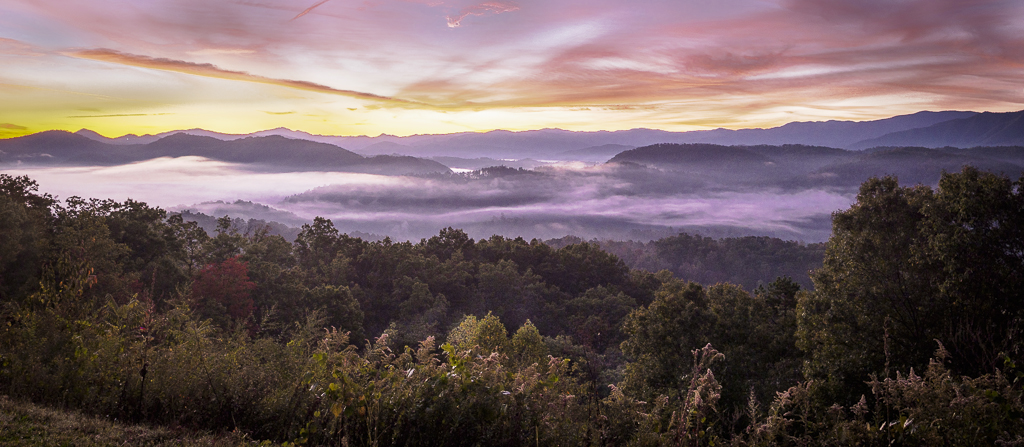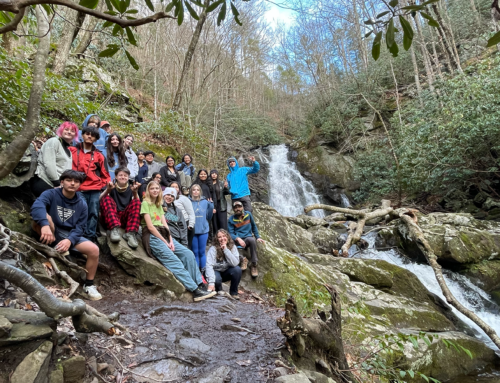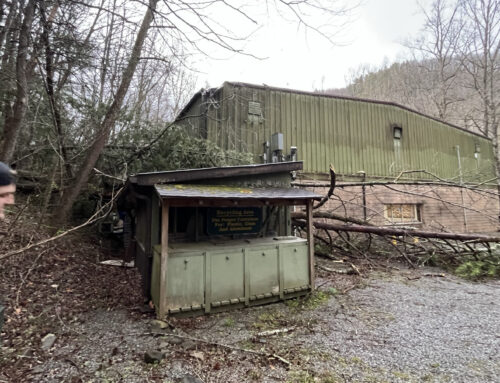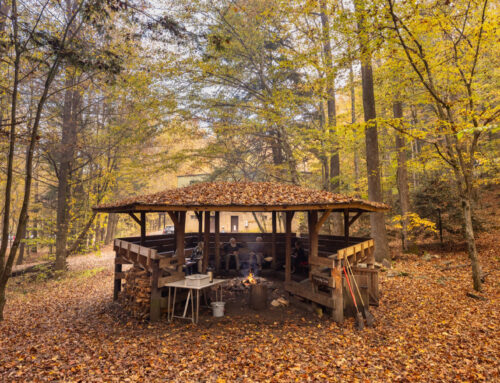Written by Stephanie Busse, Community Science Educator
To live within the Smoky Mountains is a privilege many will never experience. The adventure is an opportunity to observe a simple and fleeting pin-point in the timeline of these immemorial mountains. Built by three orogenies, or mountain creating events, it took a substantial amount of time for these mountains to form into the peaks and valleys we have come to know today.
The familiar facades will continue changing, but not enough for us to see in this lifetime or the next. We can observe the leaves wither and grow anew through the seasons. We can witness the wrath and fury of nature take form through naturally-occurring snow storms and forest fires. Though the landscape may change through these processes, the rocks underneath will look remarkably unchanged from our births to our deaths. Our timelines pale in comparison to these enduring mountains. The sediments below have been merged, mended and bent over millions of years by deep forces that will continue to mold these familiar rocks long after our time here. When we visit these mountains, we get a view of a brief moment in the unrelenting and expansive geologic timeline.
This is not to say that what we witness in our lifetime is unsubstantial — it’s just a matter of scale. From the unfolding of wildflowers in the early spring to the transition of a tadpole from water to land, tiny miracles happen around us daily. These tiny miracles add to the overall impact and awe of these mountains, reminding us that the mountains are more than the rocks below the soil.
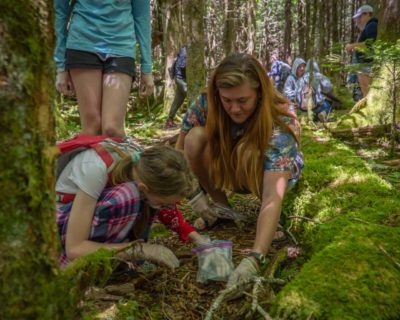
Exploring tiny wonders with one of our Girls in Science campers. Photo by David Bryant
As a summer staff member at Great Smoky Mountain Institute at Tremont, I had the privilege of living in the Smokies this summer. Living in these mountains not only creates a bond with the magnificent landscape, but forges unforgettable encounters with those we share it with along the way. Most park visitors only experience the Smokies for a couple of hours — maybe a couple days if they are lucky. After personally experiencing so much awe and wonder, I feel it is imperative to show them the important parts that make the Smokies our home.
To quote Baba Dioum, “In the end we will conserve only what we love, we will love only what we understand, and we will understand only what we are taught.” It is not enough to just love and work with the park, it is also our purpose to spread the passion, love and understanding to each visitor that experiences the magic of the park.
At Tremont, we get visitors of a special kind. We welcome both youth and adults to experience the opportunity few have: to live in the Smokies. Campers come to us from all over the country with different stories and backgrounds, but for their stay at Tremont, their stories and lives collide. It is in these moments where our purpose as staff comes to life. In these handful of days, we get to demonstrate reasons to love and enjoy the park in ways everyone can understand.
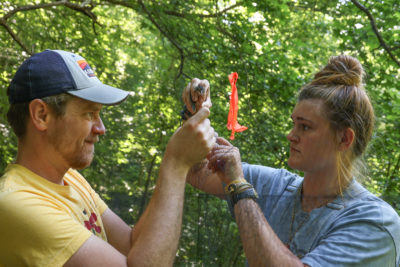
Extracting a bird from a net for bird banding population research. Photo by Warren Bielenberg.
While environmental education is our method, having the campers leave with an increased amount of knowledge isn’t really our end goal — improved knowledge is a great short-term goal, but we need to do so much more to fulfill our purpose as an organization. After camp, when our visitors leave for different paths, we want each of them to look back on their time with us and use those experiences for their entire life. We want the classes to teach them to love and appreciate the earth. We want the all-day hikes to teach them how strong and capable they can be. We want the dorm experience to remind them how varied and interesting other people are. We want the experience to teach them that while growing old is inevitable, growing up is not — being a child in nature is an experience we can have at any age.
This summer, we were in a challenging situation that presented more obstacles than usual. Last summer saw the cancellation of all camp programs, and this summer our programs ran at reduced capacity for campers and staff alike. Tremont’s goal was the same, but we were operating a little differently. It felt even more important to be present with the people around us as we have all had to distance ourselves from others for over a year now. Each week, campers came in with a desire for something different — something that could break up the monotony and hardship of the past year. They came in eager to see what we could give them and left with full hearts and empty tanks. Our summer has been jam-packed with activities, fun, and adventure for them to remember long after the conclusion of camp. Campers have departed with tears in their eyes but new friends’ phone numbers in their hands. The staff have not yet left as we still have business to attend to, but it is certain that we will also be leaving with tears in our eyes and lifelong friends in our hearts.
Friends for all seasons are made here at Tremont, and while our stay here is short compared to the ridges around us, there is nothing we would rather be doing in our pin-point of time.
Stephanie Busse is a community science educator at Great Smoky Mountains Institute at Tremont. Originally from Athens, Georgia, Steph is spending her summer living and working in the national park.
Cover image by Conrad Tinney.


